I’ve been asked for art advice often enough that I began to wonder how to share some. The response quickly grew too large for a blog post so I narrowed focus. Most questions have been about building skills. “How do I learn to draw?” or “How can I get better?” are important for folks who want to progress in their art. But I’m writing about something rarely asked about, and I think it’s more important: the artistic process.
Your process is how you make art. It’s your planning, practice, media, environment, maybe even favorite snacks. Remember the scientific method? It’s the foundation of science and underpins our understanding of the physical world. For better or worse, art doesn’t have a standard process like that. The only rule is that you make art with it.1 A good process can make the difference between a lifetime of creativity and burning out in frustration.
I don’t claim to have the best skills, but I’m a thoughtful artist with unique sensibilities. One who makes meaningful connections with their audience. One who’s been active for more than three decades and still loves it. My process helped me do this, and I hope you’ll find something of value in it.
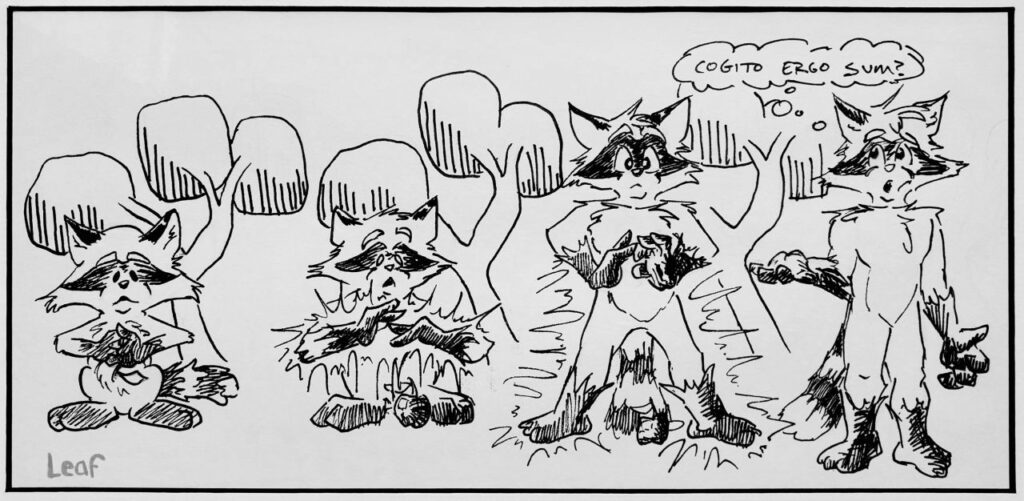
I’ve been thinking about process for a long time.
Leaf’s Creative Process
It feels funny to write about art from a position of experience because I still feel like a wide-eyed kid marveling at the godlike power of his favorite artists. A sense of naivety is part of my process; I want to be astonished. Zen Buddhism teaches a concept called shoshin, or Beginner’s Mind. “In the beginner’s mind there are many possibilities, but in the expert’s mind there are few.”2 So I step outside my comfort zone regularly and I try not to let experience control me.
Ideas
A hearty appreciation of cartoons started me drawing in my teens. I browse art online a lot. It isn’t just fun, it’s full of fresh ideas and it fires me up to create. To the wonderful community of artists out there, especially furries: Y’all are my muse, so thank you!
Each piece begins with an idea, and it often comes out of the blue. I’m usually busy when it strikes but I can write it down. Adding a quick sketch is great when the concept has specific visual elements. If I’m lucky I might be able to whip out a drawing the spot. It’s exciting to let the pencil fly on a fresh idea.
My friends and art mutuals are inspirations that never run dry. Last season I drew 71 original drawings in holiday cards. It was a most excellent exercise in idea generation and rapid execution. Thinking about friends prompted ideas outside of what I’d normally consider, and making surprise art is relaxing because there are no expectations.

Realization
Starting is the hardest part. It’s not easy to dedicate time to art in a world of interesting activities. My inner Art Dude drums up excitement and incentives, hoping I’ll give him some time. “It’ll look so cool! Folks will love it!” It also helps a lot if your process is fun, so he reminds me, “You enjoyed it last time, do it again!” Fine, you win. I’ll draw now.

I almost always start with a pencil. Drawing on paper feels cozy. It makes me draw more carefully which may improve the art. Original art feels special so the stakes are higher. Sometimes pencil and paper is all I plan to do, like in the drawings below.
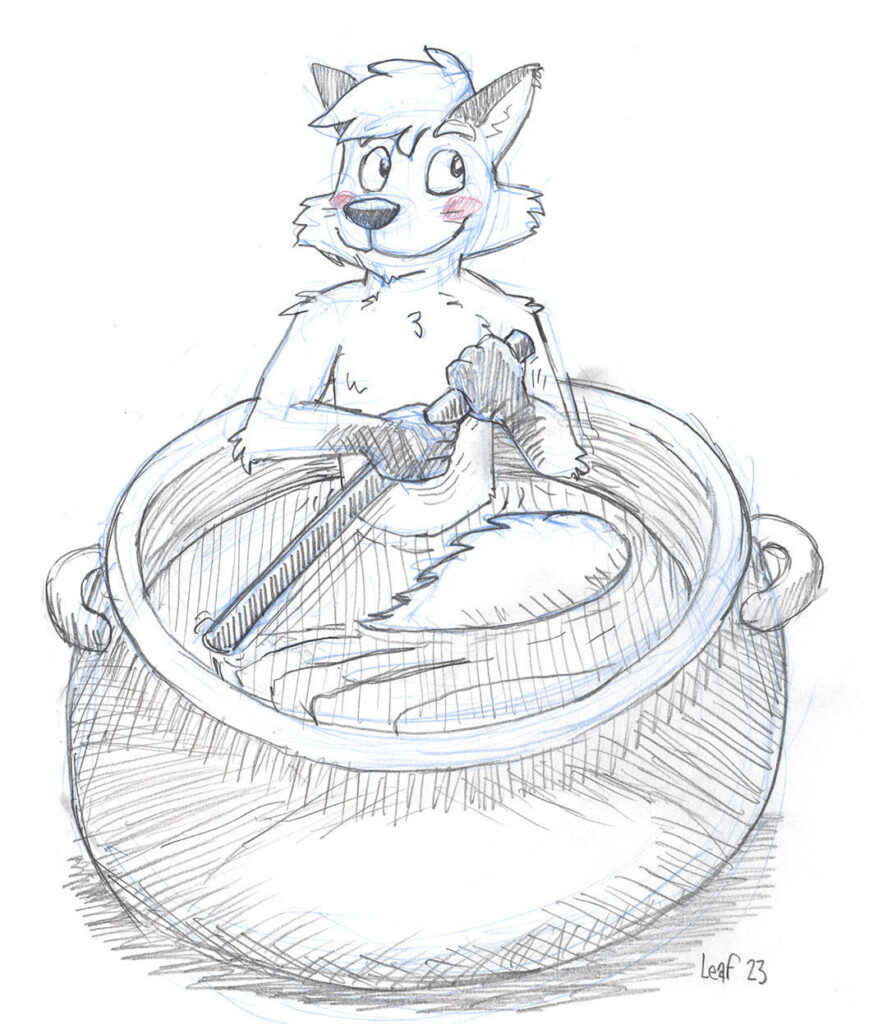

Digital is great, too. I love using Clip Studio Paint on an iPad but any tools will work. A digital flow is great for experimenting. Transforming and moving selections are super useful. It’s hard to think of downsides to digital except that it’s tempting to abuse “undo”, which can slow me down.
I’ll rough out the composition with light strokes to make sure elements fit, then sketch in earnest. For inked pieces I’ll use blue pencil, it only needs to guide the inking. For color pieces, value-based shading and other details to be shown with color can be omitted from the sketch.
I’m learning to appreciate that sometimes a very simple sketch does the job. I feel it in my gut when a sketch has that kind of energy. There’s no need to overwork a piece like that.
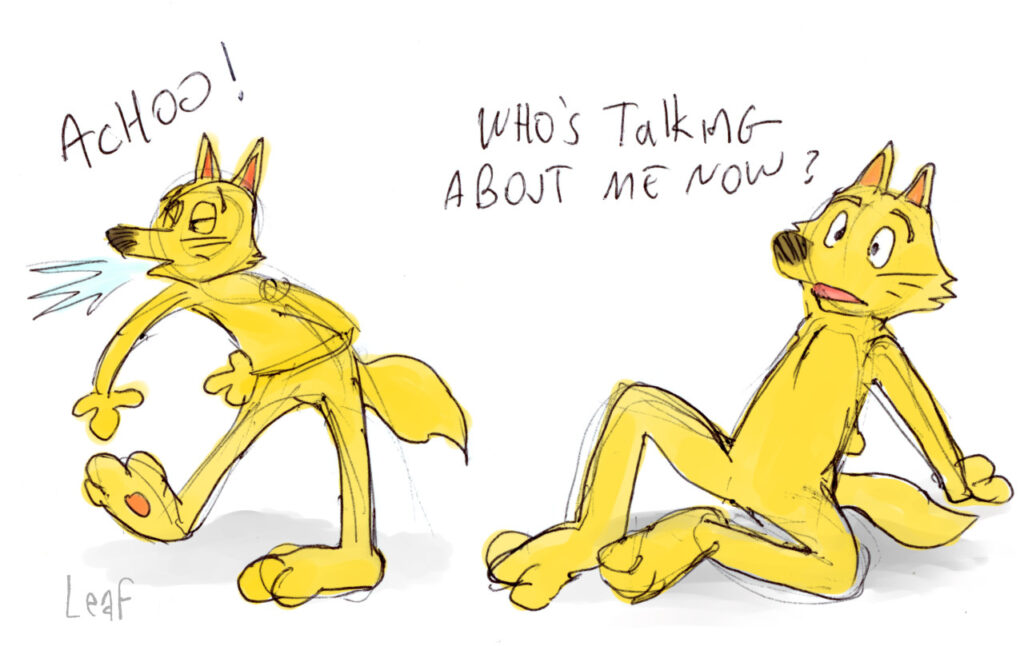
I used to ink most of my pieces but I rarely do it now. I get annoyingly obsessed with perfect lines, and if the pencil drawing is good then I’m scared to ink it because a mediocre ink job might ruin its energy. These hang-ups are all in my head. It’s probably just a phase and I might love inking again later. Lots of artists go through phases of preferring certain subjects or techniques, it’s fine! I’ll still ink pieces if that’s the look I am going for, like this ink & marker piece I sold at the Anthrocon art show this year.3

Color gives the artist new power to set moods and to make figures pop. I’m not fast so I only color a few of my sketches, preferring to make more sketches instead. I might decide to color a sketch later—I waited almost five years on this one. The sketch itself was sparse but with color I could paint a warm environment for the figures.

My style favors line over painterliness so I mostly pick colors and stay inside the lines. I might add shadows, highlights, or atmospheric effects. I like to color directly over the rough pencil lines4 because the finished work feels more loose and vibrant. I like a little wabi-sabi in my cartoons.

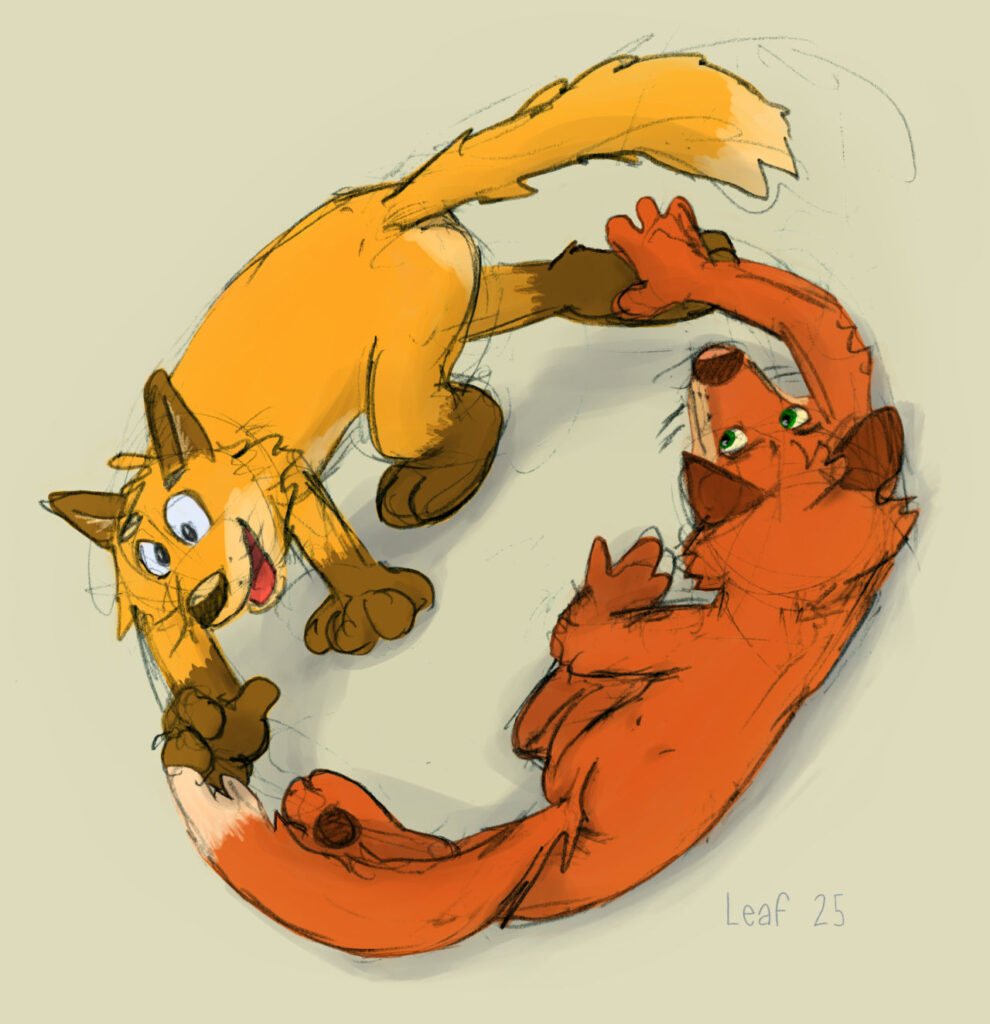
There’s an art to knowing when to stop. If I’m lucky, the piece just feels done. I look for an exit strategy when effort yields diminishing returns, or I may seek a second opinion if I’m unsure. The bar scene below has the most detailed environment I’ve drawn so far. I futzed with it for a long time but eventually I had to decide that it was done. Done is beautiful!
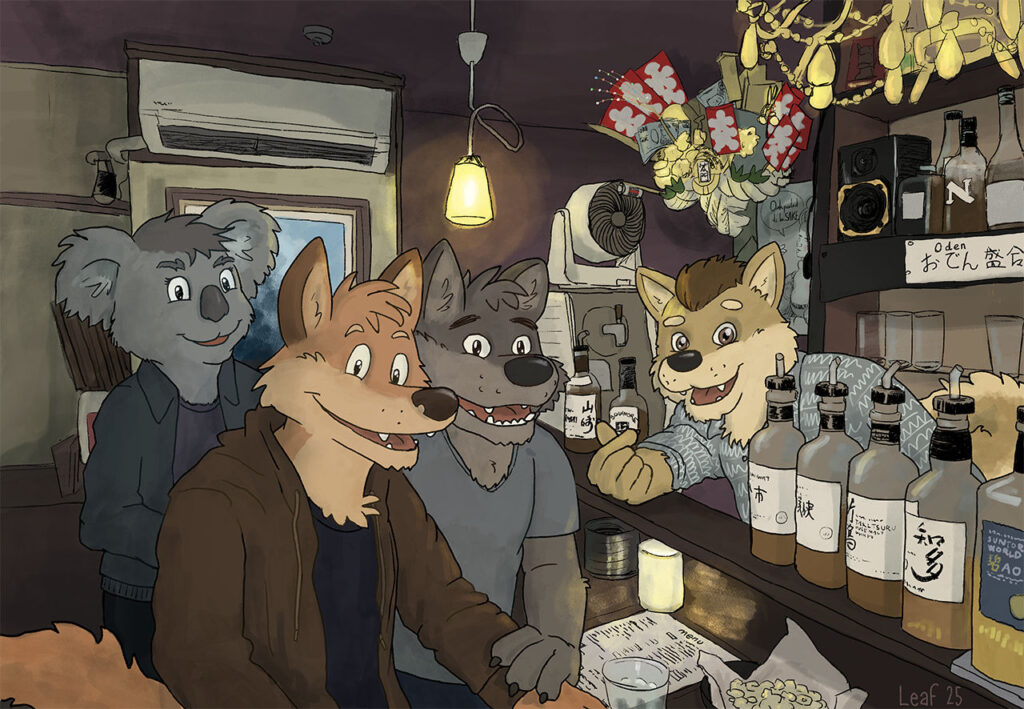
Motivation
Motivation is something every artist contends with. Sharing my work is part of my process because the interaction is important.5 An appreciative audience sends me to cloud nine. Feeling like a valued part of a creative community is why I’m here. If we understand why we create then we can craft an encouraging process. I’m driven to create the things that I want to see in the world; my best motivations come from within. Money is a poor motivator for me. Accepting payment creates an obligation, which feels bad and stifles my creativity. I can occasionally produce art on demand but doing it too much drains me. Don’t abuse the muse!
That’s my process in a nutshell. If you were hoping I’d write about making webcomics, here is a presentation I gave about Raccoony in 2024. In it I talk about my webcomic creation process and other topics.
Suggestions
My process works because it fits my personality and motivations. I feel good as I learn and make things. Your process is your relationship with your art, so it will be different. Consider these suggestions as you create.
A good process balances structure with exploration. Structure lets you leverage past experience. You apply what you’ve learned in familiar ways. It’s comforting, but too much structure slows growth. If you’re rarely surprised, consider stepping out of your comfort zone. No risk, no reward!
A healthy process is sustainable. It should reward you with something that makes the effort worthwhile, and it needs to keep you interested. An affirming process can be a virtuous cycle, making you feel better the more you do it.
Don’t worry too much about results. We’ll make some good pieces and some bad ones. Instead, embrace your artistic process. Learn and grow with it, but above all, enjoy it. Because it’s not the destination, it’s the journey.
- Art is an expression of human skill and creativity. Using Generative AI removes skill from the process and is ethically questionable. Support human artists! ↩︎
- Suzuki, Shunryū (1970). Zen mind, beginner’s mind ↩︎
- My first art show! Better late than never! ↩︎
- When working digitally, I color under the line art, not over it. The line art sits above the color so it remains fully visible. This is accomplished with layers and blending modes. ↩︎
- If you see something you really like, don’t be afraid to let the artist know! Most love affirming comments. ↩︎